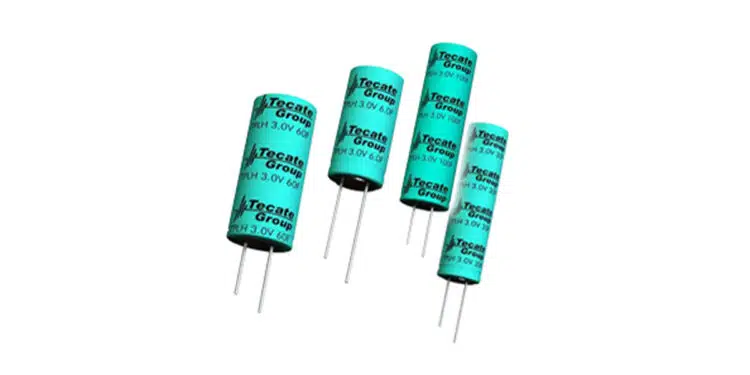Tecate Group announced the addition of its 3V TPLH™ series of small-cell supercapacitors to its already extensive TPL and TPLH™ 2.7V small-cell supercapacitor offerings.
The 3V TPLH™ series offers significantly higher energy density than current 2.7V products, exceptional life performance, and enhanced sealing to address high-temperature and humidity-rich applications.
The new series provides the pathway to higher voltage and greater energy density within the same industry-standard cell footprints, which results in saved space and may reduce the number of cells required.
The technology improvements outlined above are a direct result of propriety innovation in electrode processing and packaging while maintaining standard pin-to-pin compatibility for standard can sizes, as well as customized cells and modules on request. The 3V TPLH™ series supercapacitor cells range in value from 4F to 100F and are UL recognized and RoHS and REACH compliant.
The new 3V TPLH™ cells provide an ultra-high charge and discharge rate, excellent stability, long cycle life, and very high power density, making them ideal for use in robotics, material handling, military applications, consumer devices, telematics, handheld scanners, on-board vehicle security video backup systems, and data center short-term power backup systems. Working either in conjunction with or as stand-alone alternatives to batteries, ultracapacitors help reduce maintenance requirements, provide long operational life, and offer cost-effective energy storage for applications that require extremely reliable backup power, pulse power, or voltage control. Multiple cells can be banked in series or parallel for even higher voltage or capacitance.
TPLH™ 3V supercapacitor cells operate at a temperature range of -40ºC to +65ºC (with expanded operating temperature to +85ºC with voltage derated to 2.7V), a projected cycle life of 500,000, and a load life performance of 10 years.
Features & Benefits:
- Small size and low resistance
- Quick charge and discharge
- RoHS compliant
- UL Recognized
Applications:
- Pulse power demand
- Hybrid battery packs
- Portable electronic devices
































